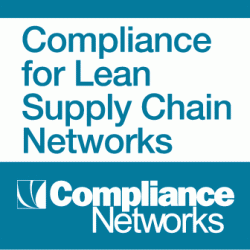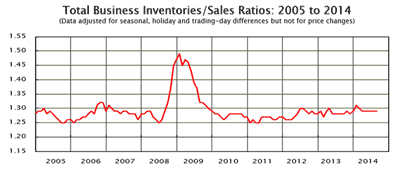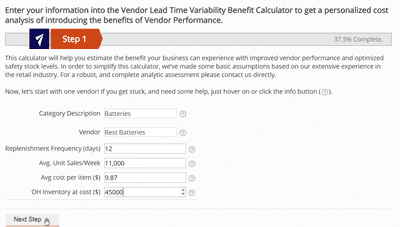 |
December 5, 2014 - Supply Chain Flagship Newsletter |
 |
| FEATURED SPONSOR: COMPLIANCE NETWORKS |
||
 |
||
FREE Calculator: Inbound Shipping Variability Impact on Expensive Safety Stock |
||
 |
|
||||||||||||||||||||||||||||||||||||||||||||||||||||||||||||||||||||||||||||||||||||||||||||||||
I next thought it made sense to connect the supply chain to shareholder value, starting with a quick review of the famous DuPont financial model, and the role of supply chain in impacting that formula. That was followed a summary of related insight developed by a man named Gerry Marsh, who has shown how two companies in the same sector with similar earnings and growth rates can have very different stock multiples, because one of the two throws off a lot more cash from its revenue. Of course, the supply chain is a key driver of operating cash flow generation. So with that, I moved next to a series of key supply chain issues that I thought would likely most connect with their work. I considered but in the end did not address the "tax efficient" supply chain, in part because like most I am no expert, even though I do believe there are some real opportunities here if you can manage an iterative process of operational and tax-aware supply chain network design. I started by noting that in terms of inventory levels, frankly we seem to have stalled. The annual REL working capital data, which we analyze, has shown corporate inventory levels rising in recent years, albeit very modestly. Our analysis by sector has shown very little progress over the past decade in most of them.
Why is that? More on this someday soon, but I cited several factors: a general bias in the last few years towards top line revenue growth, relatedly SKU proliferation and new product introductions, and longer offshore supply chains. But more provocatively, I suggest many companies may have simply hit an inventory wall within the context of their current supply chain designs. Next, I talked about the imperative to map and model a company's supply chain. The mapping took on extra urgency after the events of 2012 - earthquake and tsunami in Japan and massive flooding in Thailand, which caused huge supply chain disruptions. Shortly thereafter, a Toyota executive noted: "Our assumption that we had a total grip on our supply chain proved to be an illusion." |
|||||||||||||||||||||||||||||||||||||||||||||||||||||||||||||||||||||||||||||||||||||||||||||||||
|
|||||||||||||||||||||||||||||||||||||||||||||||||||||||||||||||||||||||||||||||||||||||||||||||||
|
|||||||||||||||||||||||||||||||||||||||||||||||||||||||||||||||||||||||||||||||||||||||||||||||||
|
|
|
YOUR FEEDBACK
Catching up with some feedback from some First Thoughts columns over the past few weeks.
That includes an outstanding email that's our Feedback of the Week on our First Thought column on The Coming US Logistics Cost Crack-Up? from long-time transportation sector executive David Goodson.
It is detailed and long enough we will just let it stand on its own - good insight.
Feedback on Logistics Cost Crack-Up:
While I have no doubt logistics costs are going up, a 22 percent increase is doubtful. Any significant price increase will force shippers to change practices to help carrier mitigate cost increases. Also, if rates go up substantially, expect more capacity to enter the market to bring supply and demand in line. However, it takes 1-2 years for additional capacity to come into the market, so there could be some eye-popping rate increases in the short term, which will recede over time. Electronic logging will have a much bigger impact that 2%. (I really don't know how any trucking company could detect a 2% change in productivity due to single factor.) Paper logging has always been the fudge factor that mitigates the loss in productivity of new regulations.
David Goodson
|
||
SUPPLY CHAIN TRIVIA ANSWER
Q: What important supply chain and enterprise metric is calculated as: Days Inventory Outstanding + Days Sales Outstanding – Days Payables Outstanding?
A: The "Cash to Cash" cycle.
| © SupplyChainDigest™ 2003-2014. All Rights Reserved. SupplyChainDigest PO Box 714 Springboro, Ohio 45066 |
POWERED BY: XDIMENSION
|









